Anime
Anime’s 7 Biggest Wins and Fails: Uncover the Ultimate Journey
Published
5 months agoon
By
Awais
The Ultimate Guide to Anime: A Journey Through Japanese Animation
As an avid anime enthusiast and industry observer, I’ve witnessed the incredible evolution and global impact of Japanese animation over the years. In this comprehensive guide, I’ll take you on a journey through the vibrant world of anime, exploring its history, cultural significance, and the reasons behind its widespread appeal. Whether you’re a seasoned otaku or a curious newcomer, this article will deepen your understanding and appreciation of this unique art form.
Key Takeaways
- Anime has a rich history dating back to the early 20th century
- The medium covers a wide range of genres, appealing to diverse audiences
- Anime has had a significant cultural impact both in Japan and globally
- Streaming platforms have revolutionized anime distribution and accessibility
- The industry faces challenges but continues to innovate and grow
The Origins and Evolution of Anime
When I think about the beginnings of animes, I’m always amazed by its humble origins and meteoric rise. The history of anime dates back to the early 1900s, with early Japanese animators experimenting with techniques pioneered by their Western counterparts. However, it wasn’t until the post-World War II era that anime truly began to take shape as a distinct art form.
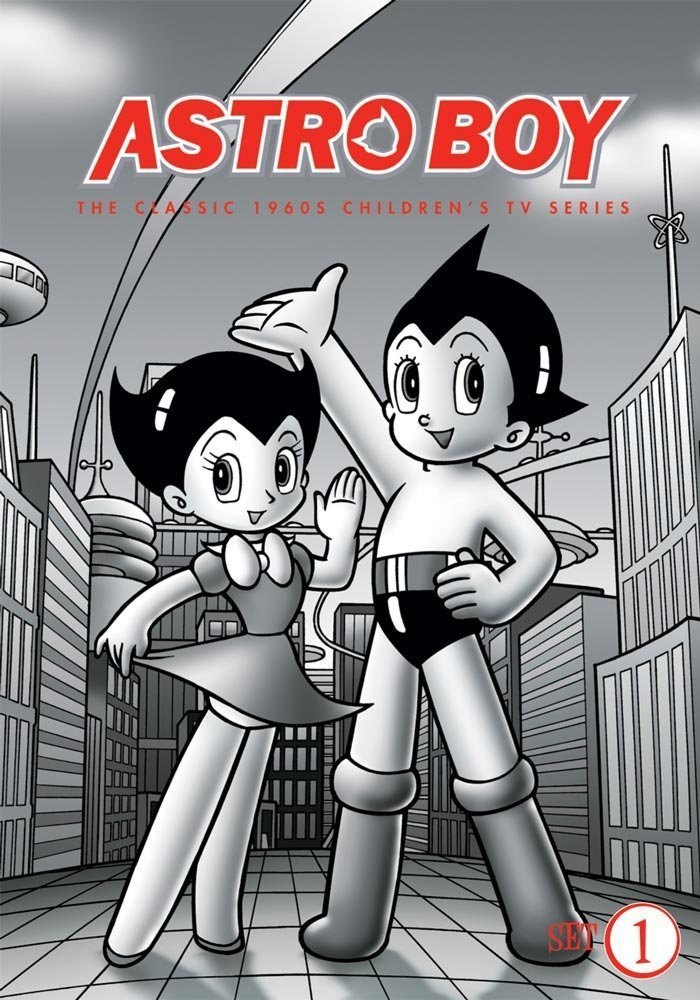
The 1960s marked a turning point for animes with the debut of Osamu Tezuka’s “Astro Boy” in 1963. Often called the “God of Manga,” Tezuka’s work laid the foundation for the animes industry as we know it today. His innovative storytelling techniques and distinctive visual style set the stage for future generations of animators.
As I delve deeper into animes history, I can’t help but marvel at the rapid technological advancements that have shaped the medium. From hand-drawn cel animation to digital production techniques, animes has consistently pushed the boundaries of what’s possible in animation.
The Diverse World of Anime Genres

One of the aspects I find most fascinating about anime is its incredible diversity. Unlike Western animation, which is often pigeonholed as children’s entertainment, anime caters to a wide range of audiences with its varied genres and themes. Let’s explore some of the most popular anime genres:
- Shonen: Targeted primarily at young male audiences, shonen anime often features action-packed storylines and themes of friendship and perseverance. Popular examples include “Naruto,” “One Piece,” and “My Hero Academia.”
- Shojo: Aimed at young female viewers, shojo anime typically focuses on romance and relationships. Classics like “Sailor Moon” and modern hits like “Fruits Basket” fall into this category.
- Seinen: Geared towards adult male audiences, seinen anime often explores more mature themes and complex narratives. “Ghost in the Shell” and “Berserk” are prime examples of this genre.
- Josei: Targeting adult women, josei anime deals with realistic romance and everyday life issues. “Nana” and “Paradise Kiss” are well-known josei series.
- Mecha: Featuring giant robots and futuristic technology, mecha anime like “Neon Genesis Evangelion” and “Mobile Suit Gundam” have a dedicated fanbase.
- Isekai: This genre involves protagonists being transported to parallel worlds or virtual realities. Recent hits like “Sword Art Online” and “Re:Zero” have popularized this genre.
- Slice of Life: Focusing on everyday experiences and character relationships, slice of life anime like “K-On!” and “Azumanga Daioh” offer a more relaxed viewing experience.
The beauty of anime lies in its ability to blend these genres, creating unique and captivating stories that defy simple categorization.
The Global Impact of Anime
As I reflect on the cultural significance of anime, I’m continually impressed by its global reach and influence. What started as a niche interest has grown into a worldwide phenomenon, shaping popular culture far beyond Japan’s borders.
In the 1980s and 1990s, anime began to gain traction internationally, with series like “Dragon Ball Z,” “Sailor Moon,” and “Pokemon” introducing Western audiences to the medium. The distinctive visual style, complex narratives, and emotional depth of anime resonated with viewers, creating a dedicated fanbase around the world.
Today, anime’s influence can be seen in various aspects of global popular culture:
- Fashion: Anime-inspired streetwear and cosplay have become increasingly mainstream.
- Music: J-pop and anime soundtracks have gained international recognition.
- Cinema: Hollywood has drawn inspiration from anime, with films like “The Matrix” and “Inception” showcasing anime-influenced visuals and themes.
- Art: The distinctive aesthetic of anime has influenced contemporary artists and illustrators worldwide.
Furthermore, anime has played a significant role in promoting Japanese culture globally, serving as a form of soft power that has increased interest in Japanese language, cuisine, and traditions.
The Streaming Revolution and Anime Accessibility
One of the most exciting developments I’ve observed in recent years is the impact of streaming platforms on anime distribution. The rise of services like Crunchyroll, Funimation, and Netflix has revolutionized how fans around the world access and consume anime industry.
In the past, international anime fans often had to rely on fan-subtitled versions or wait months (or even years) for official releases. Now, many new series are available for streaming immediately after their Japanese broadcast, often with professional subtitles in multiple languages.
This increased accessibility has had several positive effects on the anime industry:
- Wider audience reach: Streaming platforms have introduced anime to new viewers who might not have sought it out otherwise.
- Reduced piracy: Easy, legal access to anime has decreased the reliance on unofficial distribution channels.
- Increased revenue: Subscription-based models provide a steady income stream for anime producers and distributors.
- Production boost: The demand for content on streaming platforms has led to an increase in anime production, with some platforms even funding original anime series.
As I look to the future, I expect streaming to continue playing a crucial role in the growth and evolution of the anime industry.
Mastering My One Piece Knowledge: Top Fillers One Piece List
The Art and Technology Behind Anime Production
As someone who’s deeply fascinated by the creative process, I find the production of anime to be a remarkable blend of artistry and technology. The creation of an anime genres series involves multiple stages and requires the collaboration of numerous talented individuals.
- Pre-production: This anime phase involves story development, character design, and storyboarding. The attention to detail in character design is particularly noteworthy, with artists creating multiple sketches to perfect each character’s look and personality.
- Production: The main production in anime phase includes key animation, in-between animation, background art, and color styling. While traditional hand-drawn techniques are still used, many studios now incorporate digital tools to streamline the process.
- Post-production: Anime final stage involves adding sound effects, music, and voice acting. The voice acting industry in Japan, known as “seiyuu,” is highly respected and plays a crucial role in bringing characters to life.
One aspect of anime production that continues to evolve is the use of computer-generated imagery (CGI). While some purists prefer traditional 2D animation, many modern anime series skillfully blend 2D and 3D elements to create visually stunning scenes that would be difficult or impossible to achieve with hand-drawn techniques alone.
Challenges and Future of the Anime Industry
As I look at the current state of the anime industry, I see both challenges and opportunities. While the global popularity of anime continues to grow, the industry faces several hurdles:
- Working conditions: The anime industry is notorious for its demanding work schedules and low pay for entry-level animators. Improving working conditions is crucial for the long-term sustainability of the industry.
- Oversaturation: With the increase in anime production, there’s a risk of market oversaturation, potentially leading to a decrease in overall quality.
- Balancing tradition and innovation: As new technologies emerge, the industry must find ways to incorporate these advancements while maintaining the unique aesthetic and storytelling elements that make anime special.
- Copyright issues: With the global spread of anime, protecting intellectual property rights has become increasingly complex.
Despite these challenges, I remain optimistic about the future of anime. The industry has shown remarkable resilience and adaptability over the years. Emerging technologies like virtual reality (VR) and augmented reality (AR) offer exciting possibilities for new forms of anime storytelling and viewer engagement.
Moreover, the increasing collaboration between Japanese anime studios and international partners is opening up new avenues for creative expression and distribution. This cross-cultural exchange has the potential to bring fresh perspectives to the medium while expanding its global reach even further.
As I reflect on the world of anime, I’m continually amazed by its ability to captivate audiences, push creative boundaries, and bridge cultural divides. From its humble beginnings to its current status as a global cultural phenomenon, anime has proven itself to be a versatile and enduring art form.
Whether you’re a long-time fan or someone just beginning to explore the world of Japanese animation, I hope this guide has deepened your appreciation for the artistry, diversity, and cultural significance of anime. As the medium continues to evolve, I look forward to witnessing the new stories, styles, and innovations that will shape the future of anime.
Remember, the world of anime is vast and diverse, with something to offer every viewer. So don’t be afraid to explore different genres, discover new series, and immerse yourself in the rich, vibrant world of Japanese animation. Happy watching!
Anime
Demon Slayer 5 Reasons It’s the Unstoppable Anime Phenomenon
Published
5 months agoon
October 4, 2024By
Awais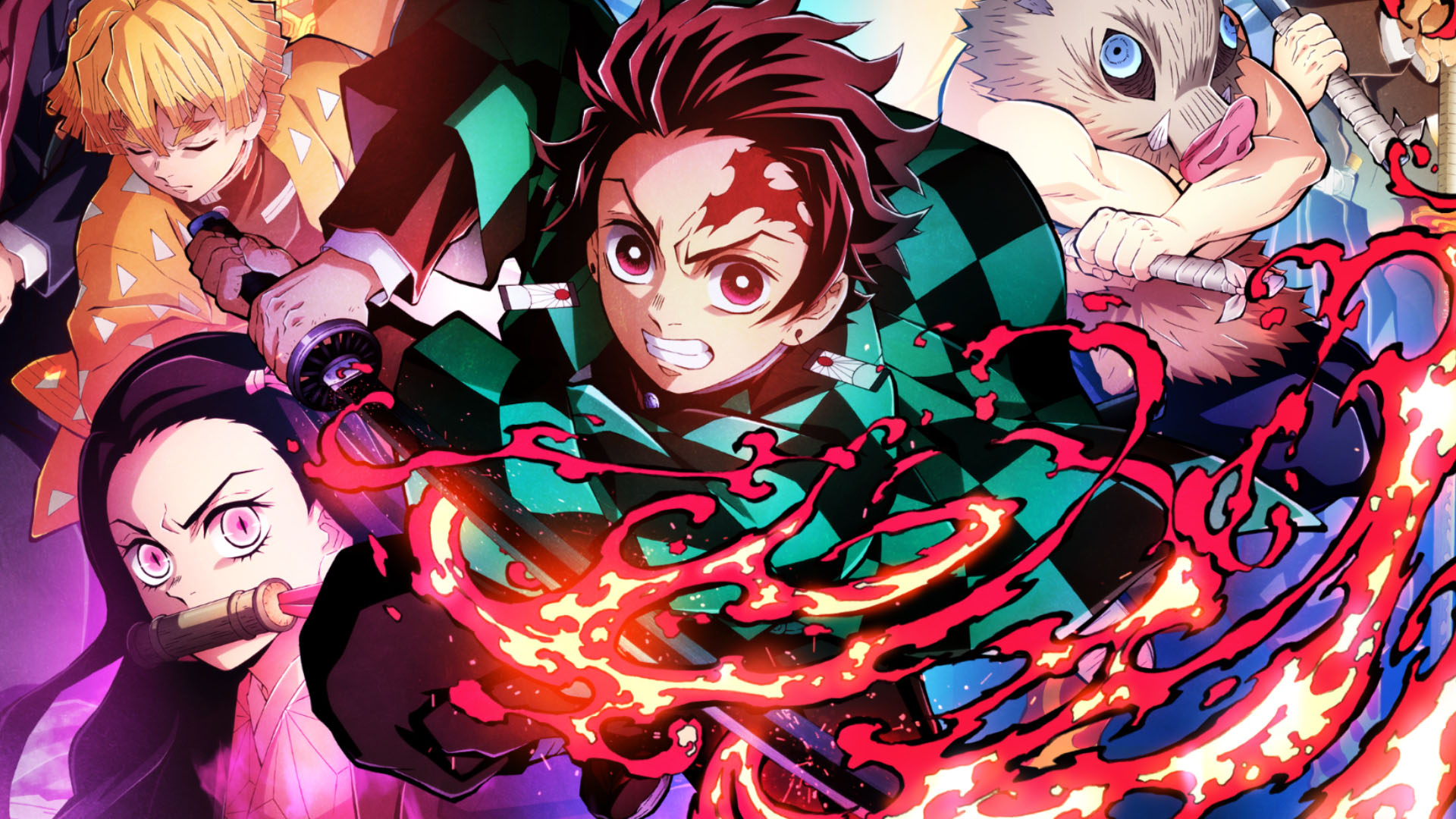
Demon Slayer The Epic Anime Phenomenon That’s Slaying Hearts Worldwide
As an avid anime enthusiast and critic, I’ve witnessed countless series rise and fall in popularity. But few have captured the hearts and minds of viewers quite like Demon Slayer (Kimetsu no Yaiba). This epic tale of demons, swordsmen, and the unbreakable bonds of family has taken the anime world by storm, and I’m here to dive deep into what makes this series so phenomenal.
Key Takeaways
- Demon Slayer combines stunning animation with a compelling storyline, making it a standout in the anime world.
- The series’ themes of family, perseverance, and humanity resonate strongly with viewers across cultures.
- Ufotable’s animation techniques, particularly in fight scenes, set a new standard for visual quality in anime.
- The characters’ depth and development contribute significantly to the show’s emotional impact and popularity.
- Demon Slayer’s success extends beyond anime, influencing various aspects of pop culture and the entertainment industry.
The Rise of Demon Slayer: A Brief Overview
Demon Slayer burst onto the anime scene in 2019, adapted from Koyoharu Gotouge’s manga of the same name. The series follows Tanjiro Kamado, a young boy who becomes a demon slayer after his family is slaughtered and his sister Nezuko is turned into a demon. What sets this premise apart is not just its dark undertones, but the unwavering hope and determination that permeate every episode.
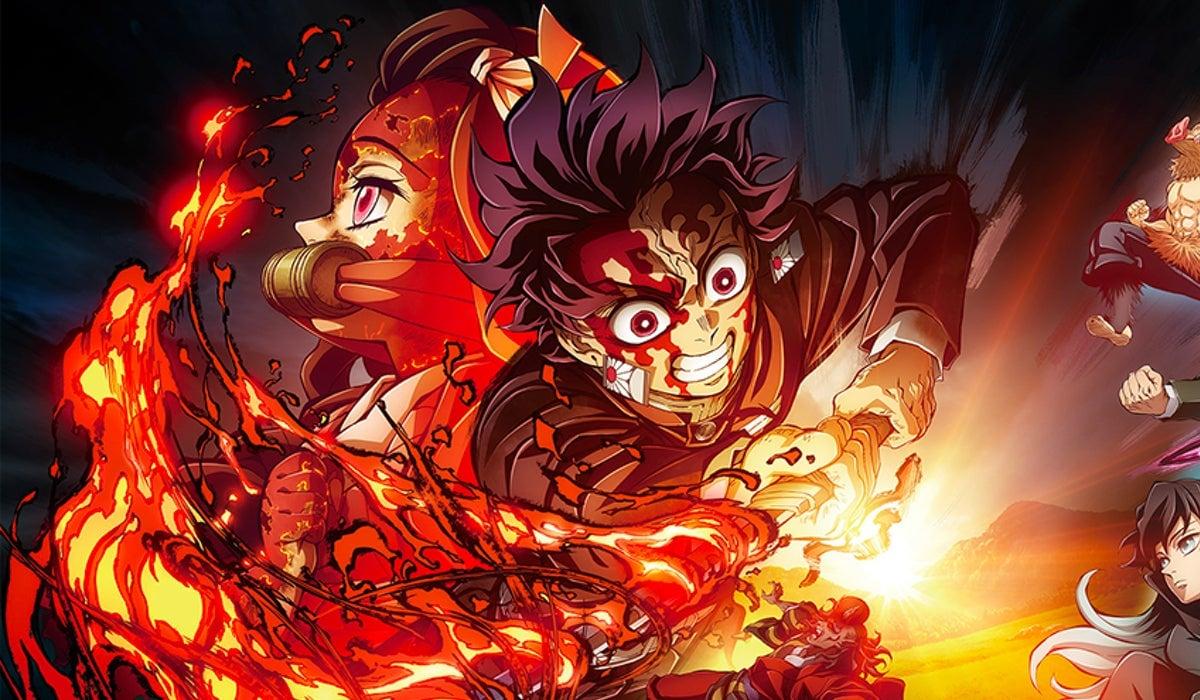
From its very first episode, I was captivated by the show’s ability to blend heart-wrenching drama with breathtaking action sequences. The series quickly gained traction, and by the end of its first season, it had become a global phenomenon. But what exactly catapulted Demon Slayer to such heights of popularity? Let’s break it down.
The Art of Storytelling: Demon Slayer’s Narrative Mastery
At its core, Demon Slayer is a story about family, sacrifice, and the blurred lines between humanity and monstrosity. These themes are not new to anime, but the way they’re presented in Demon Slayer feels fresh and impactful.
A Hero’s Journey with a Twist
Tanjiro’s quest to cure his sister and avenge his family follows the classic hero’s journey structure, but with unique elements that set it apart. His unwavering compassion, even towards the demons he fights, adds a layer of complexity to the traditional good-versus-evil narrative. This nuanced approach to morality resonates with viewers, myself included, who appreciate storytelling that goes beyond simple black-and-white conflicts.
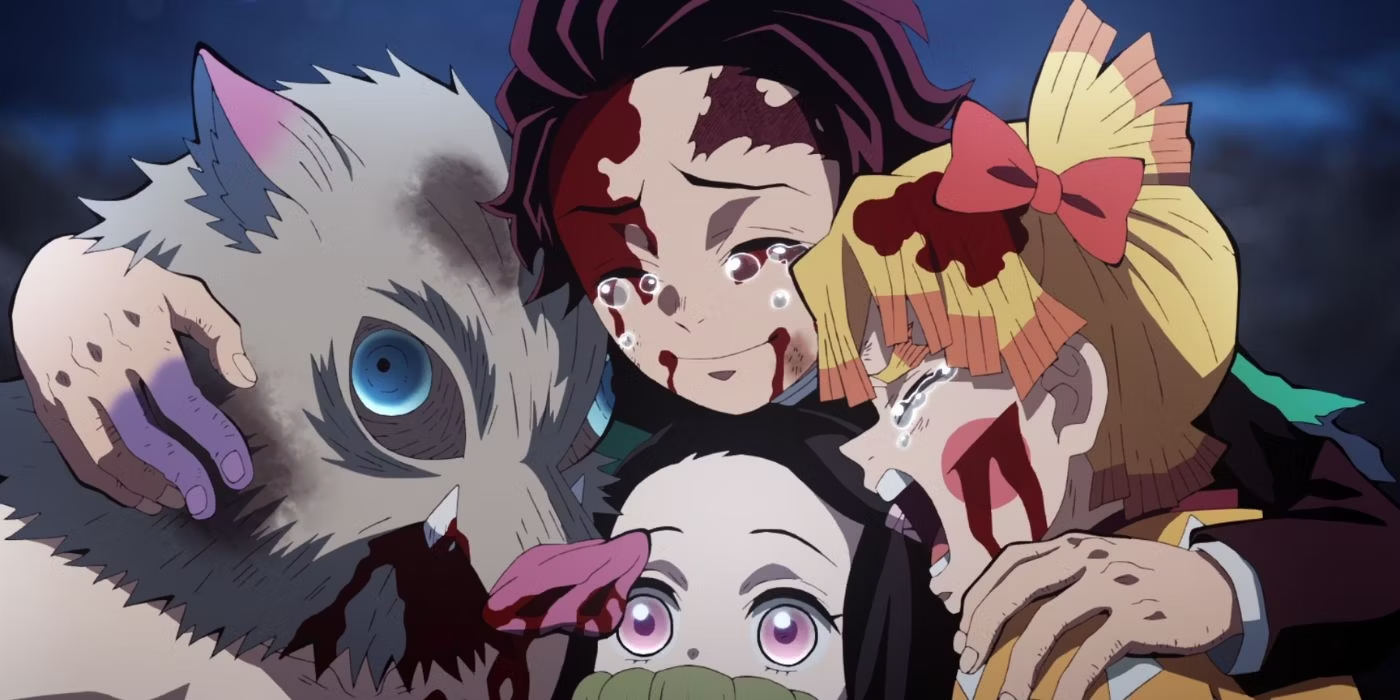
Emotional Depth and Character Development
What truly sets Demon Slayer apart is its emotional depth. Each character, from the main cast to supporting roles, is given room to grow and evolve. I find myself continually impressed by how the series manages to make even its villains sympathetic, often revealing tragic backstories that explain their descent into evil without excusing their actions.
The bond between Tanjiro and Nezuko is the emotional anchor of the series. Their relationship serves as a constant reminder of what’s at stake, driving the narrative forward while tugging at the heartstrings of viewers. It’s a testament to the writing that this central relationship remains compelling throughout the series, never feeling forced or overwrought.
Visual Spectacle: The Animation That Defines a Generation
If there’s one aspect of Demon Slayer that consistently leaves me in awe, it’s the animation. Ufotable, the studio behind the series, has set a new standard for visual quality in anime.
Breathtaking Fight Scenes
The fight scenes in Demon Slayer are nothing short of spectacular. The fluid motion, dynamic camera work, and creative use of special effects create battles that are not just visually stunning but also emotionally charged. The way each character’s unique breathing style is visualized adds an extra layer of depth to the combat, making each clash a feast for the eyes.

One standout moment that comes to mind is the fight between Tanjiro and Rui in episode 19 of the first season. The combination of Tanjiro’s determination, the emotional weight of the moment, and the jaw-dropping animation created a scene that’s widely regarded as one of the best in anime history. It’s moments like these that elevate Demon Slayer from great to truly exceptional.
A Feast for the Senses
But it’s not just the action sequences that shine. The attention to detail in every frame is remarkable. From the intricate designs of the demons to the beautiful landscapes of Taisho-era Japan, every scene is crafted with care. The use of color and lighting to set the mood is particularly effective, creating an atmosphere that can shift from serene to terrifying in an instant.
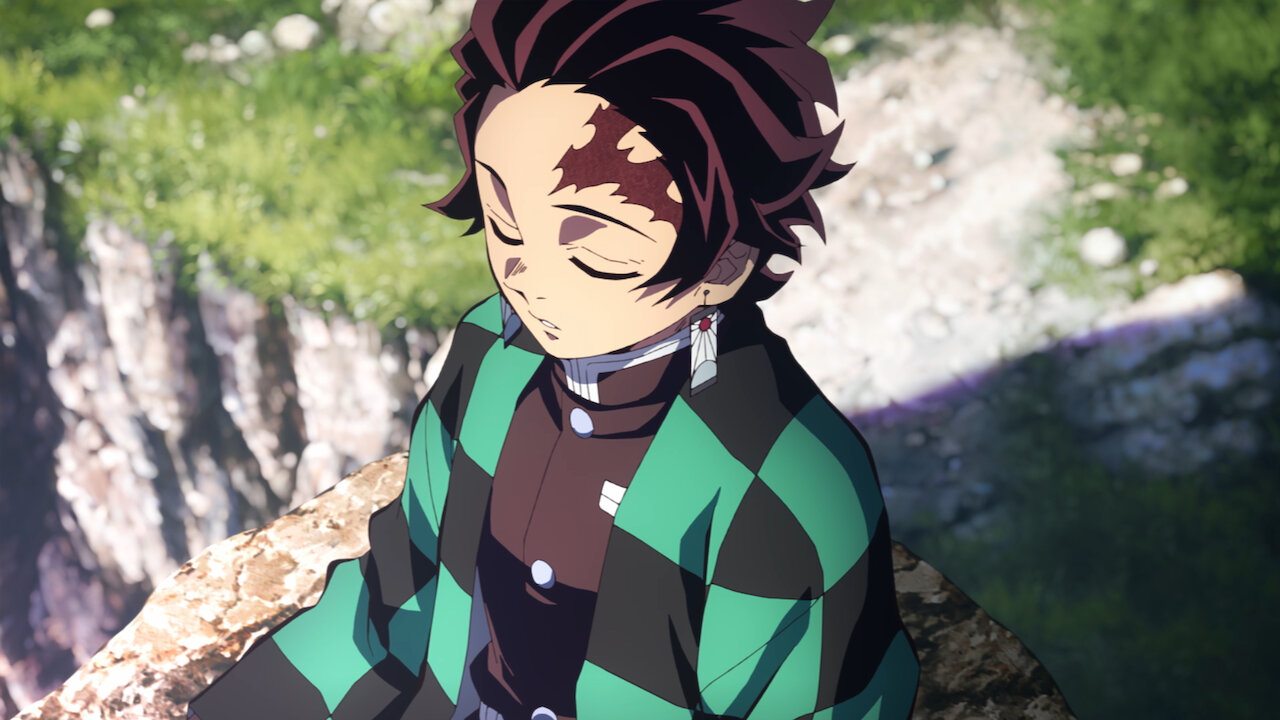
The integration of traditional Japanese art styles, particularly in the visualization of the breathing techniques, adds a unique aesthetic flavor to the series. It’s a visual representation of the show’s themes, blending the traditional with the modern, much like how the story balances historical setting with fantastical elements.
Sound and Music: The Unsung Heroes of Demon Slayer
While the visuals of Demon Slayer often steal the spotlight, I can’t overlook the significant role that sound design and music play in the series’ success.
A Soundtrack That Elevates Every Scene
The musical score, composed by Yuki Kajiura and Go Shiina, is a perfect complement to the on-screen action. From heart-pumping battle themes to somber melodies that underscore emotional moments, the music enhances every scene. The opening theme, “Gurenge” by LiSA, became a cultural phenomenon in its own right, topping charts and becoming instantly recognizable even to those who haven’t watched the show.
Voice Acting That Brings Characters to Life
The voice acting in both the original Japanese and the English dub is exceptional. Each actor brings depth and nuance to their character, conveying complex emotions that add layers to the already rich storytelling. Natsuki Hanae’s portrayal of Tanjiro, in particular, stands out for its ability to convey both fierce determination and gentle compassion.
Character Spotlight: The Heart of Demon Slayer
While Demon Slayer boasts impressive visuals and sound, it’s the characters that truly make the series special. Let’s take a closer look at some of the key players who have captured the hearts of fans worldwide.
Tanjiro Kamado: The Compassionate Warrior
At the center of it all is Tanjiro, our main protagonist. What sets Tanjiro apart from many shonen anime heroes is his unwavering compassion. Even as he fights demons, he never loses sight of their humanity, often mourning for the lives they led before turning to evil. This compassion, combined with his determination and quick thinking, makes him a unique and compelling hero.
I find Tanjiro’s growth throughout the series particularly impressive. From a simple charcoal seller to a skilled demon slayer, his journey is one of constant learning and self-improvement. Yet, despite the hardships he faces, he never loses his kind heart, making him a hero that’s easy to root for.
Nezuko Kamado: More Than Just a Demon Sister
Nezuko, Tanjiro’s demon sister, could have easily been a plot device, but the series makes her so much more. Despite being unable to speak for most of the series, Nezuko’s character shines through her actions and expressions. Her struggle against her demon nature and her fierce protection of her brother add depth to her character.
What I find most interesting about Nezuko is how she challenges the series’ own premise. In a world where demons are seen as irredeemable monsters, Nezuko’s existence raises questions about the nature of humanity and the possibility of redemption.
Zenitsu Agatsuma and Inosuke Hashibira: Comic Relief with Depth
Zenitsu and Inosuke, Tanjiro’s fellow demon slayer trainees, initially seem like typical comic relief characters. Zenitsu is cowardly and prone to hysterics, while Inosuke is brash and battle-hungry. However, as the series progresses, both reveal hidden depths that make them far more than simple archetypes.
Zenitsu’s journey from a coward who only fights in his sleep to a warrior who can face his fears is particularly compelling. Inosuke, too, shows growth as he learns the value of teamwork and friendship. These character arcs add layers to the story, showing that even supporting characters receive thoughtful development.
The Hashira: Pillars of Strength and Complexity
The Hashira, the elite demon slayers of the corps, each bring their own unique flavor to the series. From the flamboyant Tengen Uzui to the stoic Giyu Tomioka, each Hashira has a distinct personality and fighting style that adds variety to the cast.
What I appreciate most about the Hashira is how they challenge Tanjiro and help him grow. Each interaction with a Hashira pushes Tanjiro to new heights, both in terms of his skills and his understanding of what it means to be a demon slayer.
Themes and Symbolism: The Deeper Layers of Demon Slayer
While Demon Slayer is undoubtedly an action-packed adventure, it’s the underlying themes and symbolism that give the series its depth and staying power.
The Duality of Human Nature
One of the most prominent themes in Demon Slayer is the duality of human nature. The demons, once human themselves, represent the darkest aspects of humanity – greed, cruelty, and selfishness. Yet, many of them retain traces of their humanity, often revealed in their final moments.
This theme is further explored through characters like Tanjiro, who must balance his compassion with the need to fight, and Nezuko, who struggles against her demon nature. It’s a nuanced take on the age-old battle between good and evil, suggesting that the line between the two is often blurrier than we might think.
The Power of Bonds and Family
Family, both blood-related and chosen, is at the heart of Demon Slayer. Tanjiro’s devotion to Nezuko drives the entire plot, but we see the importance of bonds in other relationships too. The camaraderie between Tanjiro, Zenitsu, and Inosuke, the mentorship of the Hashira, and even the twisted family dynamics of some demon groups all highlight how connections to others shape our identities and actions.
I find this focus on relationships refreshing in a genre that often glorifies individual strength. Demon Slayer consistently shows that true strength comes from supporting and being supported by others.
Tradition vs. Progress
Set in Taisho-era Japan, a time of rapid modernization, Demon Slayer often touches on the theme of tradition versus progress. The demon slayers, with their swords and breathing techniques, represent traditional ways, while the demons, especially those higher up in Muzan’s ranks, often embrace modern technologies and ideologies.
This conflict is subtly woven throughout the series, reflecting the real-world tensions of early 20th century Japan. It adds a layer of historical context that enriches the storytelling, making the fantastical elements feel grounded in a real time and place.
Gojo 8 Unstoppable Powers that Shocked Jujutsu Kaisen Fans
The Cultural Impact of Demon Slayer
It’s impossible to discuss Demon Slayer without acknowledging its massive cultural impact, both in Japan and internationally.
Breaking Box Office Records
The release of the Demon Slayer movie, “Mugen Train,” in 2020 was nothing short of a phenomenon. Despite being released during the COVID-19 pandemic, it became the highest-grossing film in Japanese history, surpassing Studio Ghibli’s “Spirited Away.” This success wasn’t limited to Japan; the film performed exceptionally well internationally, proving the global appeal of the franchise.
Boost to the Manga and Anime Industry
The success of Demon Slayer has had a ripple effect on the entire manga and anime industry. It’s sparked renewed interest in the medium, attracting new fans and encouraging publishers and studios to take more risks with their properties. As someone who’s been following anime for years, it’s exciting to see how one series can revitalize an entire industry.
Merchandise and Collaborations
Walk into any store in Japan, and you’re likely to see Demon Slayer merchandise. From clothing to kitchenware, the series’ popularity has led to collaborations with numerous brands. This widespread presence has further cemented Demon Slayer’s place in popular culture, making it a true cross-media phenomenon.
The Future of Demon Slayer
As of 2024, Demon Slayer continues to be a dominant force in the anime world. With the manga concluded but the anime still ongoing, fans are eagerly anticipating how the rest of the story will be adapted to the screen.
Upcoming Seasons and Expectations
The anime has consistently delivered high-quality adaptations of the manga, and expectations for future seasons are sky-high. As someone who’s read the manga, I’m particularly excited to see how some of the later arcs will be brought to life with Ufotable’s stellar animation.
The Legacy of Demon Slayer
Even as the story of Tanjiro and Nezuko approaches its conclusion, the impact of Demon Slayer on the anime industry and popular culture is likely to be felt for years to come. Its blend of traditional storytelling with modern animation techniques has set a new standard for what anime can achieve.
Why Demon Slayer Resonates with Me
As a long-time anime fan, I’ve seen many series come and go, but Demon Slayer has left a lasting impression on me. Its ability to balance exciting action with genuine emotion and character development is truly special. The series tackles complex themes without losing its sense of adventure, creating a story that’s both entertaining and thought-provoking.
What I appreciate most about Demon Slayer is how it champions empathy and understanding, even in the face of great evil. Tanjiro’s compassion, even towards his enemies, is a powerful message in a world that often seems divided. It’s a reminder that strength doesn’t always come from physical power, but from the ability to connect with others and stand firm in one’s beliefs.
Demon Slayer is more than just another shonen anime; it’s a cultural phenomenon that has redefined what anime can be in the 21st century. Its blend of stunning visuals, compelling characters, and thought-provoking themes has created a series that appeals to a wide audience, from hardcore anime fans to casual viewers.
As we look to the future of anime, it’s clear that Demon Slayer has set a new benchmark. Its success has opened doors for more ambitious storytelling and animation in the industry, and I’m excited to see how future series will build on its legacy.
Whether you’re a long-time fan or new to the world of anime, Demon Slayer offers something special. It’s a series that reminds us of the power of storytelling to move, inspire, and entertain. As Tanjiro continues his journey, one thing is certain: the impact of Demon Slayer will be felt in the anime world for years to come.
Anime
Gojo 8 Unstoppable Powers that Shocked Jujutsu Kaisen Fans
Published
5 months agoon
October 3, 2024By
Awais
Gojo: The Enigmatic Sorcerer of Jujutsu Kaisen
As an avid fan of anime and manga, I’ve been captivated by the world of Jujutsu Kaisen since its debut. At the heart of this supernatural thriller stands one character who has taken the anime community by storm: Satoru Gojo. Today, I’m thrilled to take you on a deep dive into the world of this enigmatic sorcerer, exploring his powers, personality, and the impact he’s had on the series and its fans.
Key Takeaways
- Gojo is widely regarded as the strongest character in Jujutsu Kaisen, with unparalleled cursed techniques
- His complex personality combines playfulness with a deep sense of responsibility
- Gojo’s presence in the series has significantly influenced its popularity and fan engagement
- The character’s design and voice acting contribute greatly to his appeal
- Gojo’s relationships with other characters, especially his students, add depth to his role in the story
1. The Power of Gojo: Unraveling the Strongest Sorcerer
When I first encountered Gojo in Jujutsu Kaisen, I was immediately struck by the aura of power that surrounds him. It’s not just his confident demeanor or his striking appearance; there’s something about Gojo that screams “unbeatable.” As I delved deeper into the series, I realized that this impression wasn’t just for show – Gojo is consistently portrayed as the pinnacle of jujutsu sorcery.

The Limitless Cursed Technique
At the core of Gojo’s power is his Limitless Cursed Technique. This ability allows him to manipulate space at will, creating an infinite space between himself and any attack. As I watched Gojo effortlessly deflect powerful curses and sorcerers alike, I couldn’t help but be amazed by the creativity of this power. It’s not just about raw strength; it’s a technique that requires immense control and understanding of spatial manipulation.
What fascinates me most about the Limitless technique is how it’s presented in the series. The visual representation of Gojo’s power, with its swirling blue energy and distorted space, is a feast for the eyes. It’s a testament to the anime’s production quality that they can make such an abstract concept feel tangible and awe-inspiring.
The Six Eyes: Gojo’s Trump Card
Complementing the Limitless technique is Gojo’s inherited ability, the Six Eyes. This ocular power grants him an unparalleled ability to perceive and analyze cursed energy. As I learned more about the Six Eyes, I realized how crucial they are to Gojo’s dominance in the jujutsu world. They allow him to use his cursed energy with perfect efficiency, effectively giving him an unlimited supply.

The combination of the Limitless technique and the Six Eyes is what truly sets Gojo apart. It’s a synergy that makes him virtually unbeatable, able to outlast and overpower any opponent. This incredible power is a double-edged sword, though. As the series progresses, we see how Gojo’s strength isolates him from others and shapes his worldview in unique ways.
Gojo’s Fighting Style: A Dance of Destruction
Watching Gojo fight is like witnessing a force of nature. His battles are a perfect blend of raw power and tactical brilliance. I’m always impressed by how the series portrays his fighting style – it’s not just about overwhelming force, but also about precision and strategy.
One of my favorite aspects of Gojo’s combat prowess is his ability to adapt to any situation. Whether he’s facing a horde of cursed spirits or a powerful sorcerer, Gojo always seems to have the perfect technique up his sleeve. From his devastating Purple technique to his ability to reverse cursed techniques, each fight reveals new facets of his abilities.
2. The Man Behind the Blindfold: Gojo’s Complex Personality
While Gojo’s power is undoubtedly a major draw, it’s his personality that truly makes him one of my favorite characters in anime. At first glance, Gojo might seem like a typical overpowered character – cocky, aloof, and untouchable. But as I’ve followed his journey through Jujutsu Kaisen, I’ve come to appreciate the layers of his personality.
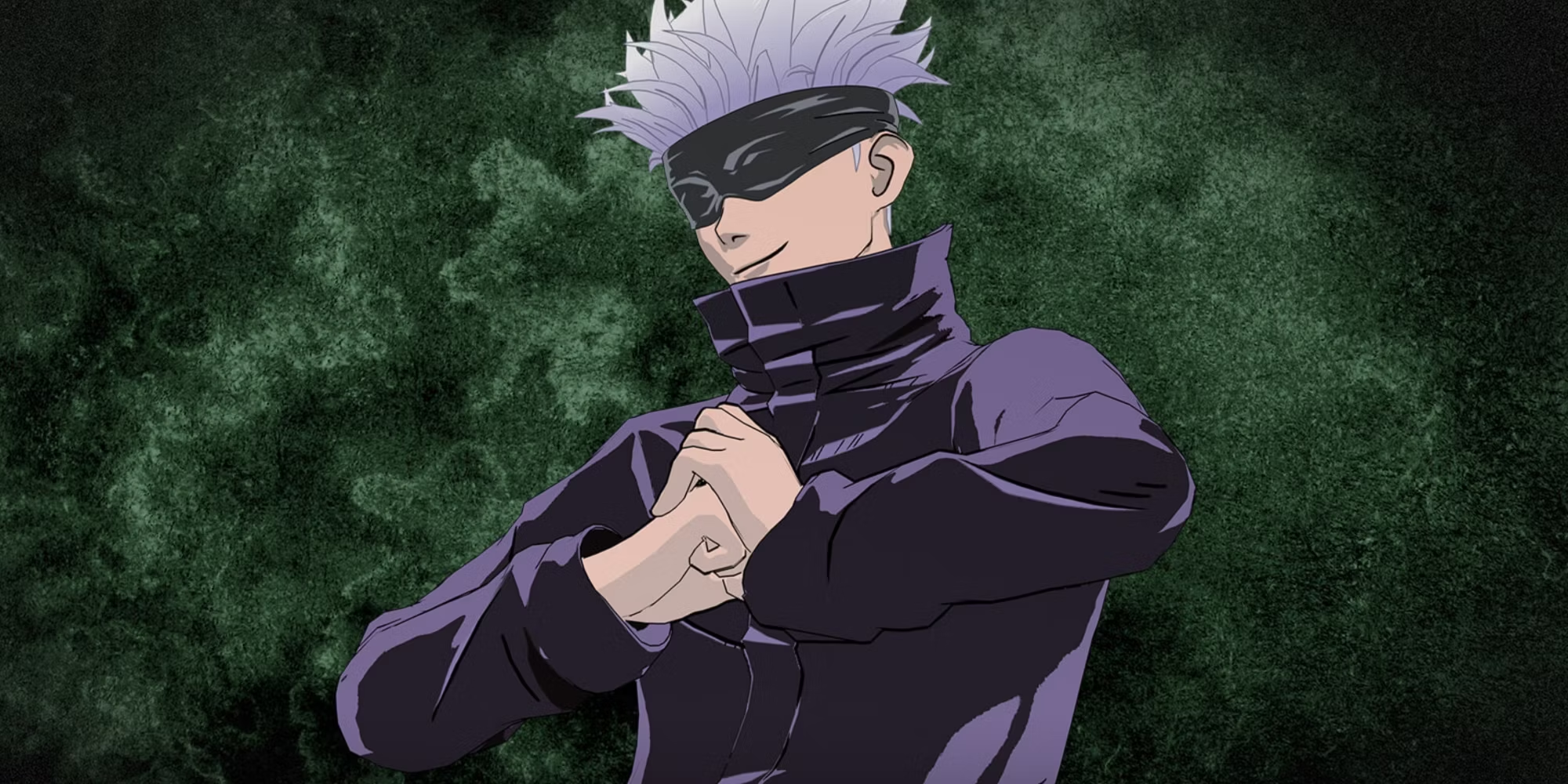
The Playful Trickster
One of the most endearing aspects of Gojo’s character is his playful nature. Despite being the strongest sorcerer alive, he often behaves like a mischievous child. His interactions with students and colleagues are filled with jokes, teasing, and an infectious enthusiasm that I can’t help but smile at.
This playfulness isn’t just for show, though. I’ve noticed how Gojo uses his carefree attitude as a tool to put others at ease and to mask his true intentions. It’s a fascinating contrast to the serious nature of the jujutsu world, and it adds a much-needed lightness to some of the darker moments in the series.
The Weight of Responsibility
Beneath Gojo’s cheerful exterior lies a deep sense of responsibility. As the strongest sorcerer, he bears the burden of protecting humanity from curses. I find it compelling how the series explores the pressure this puts on Gojo. There are moments when we see cracks in his carefree facade, revealing the weight he carries.
One of the most poignant aspects of Gojo’s character is his desire to change the jujutsu world. He recognizes the flaws in the current system and works tirelessly to nurture the next generation of sorcerers. This long-term vision adds depth to his character, showing that he’s not just content with being the strongest, but actively working towards a better future.
The Loneliness of Strength
As I’ve watched Gojo’s story unfold, one theme that consistently emerges is the loneliness that comes with his unparalleled strength. There’s a sadness to Gojo that’s often hidden behind his smile and his sunglasses. He stands at the peak of the jujutsu world, with no true equals to challenge him or understand his perspective.
This isolation is perhaps most evident in Gojo’s relationships with other characters. While he cares deeply for his students and colleagues, there’s always a sense of distance. It’s a subtle but powerful aspect of his character that adds a layer of tragedy to his overwhelming power.
3. The Impact of Gojo on Jujutsu Kaisen’s Popularity
It’s impossible to discuss Jujutsu Kaisen without acknowledging the significant impact Gojo has had on the series’ popularity. From the moment he first appeared on screen, Gojo captured the imagination of fans worldwide, myself included.
A Fan Favorite
The popularity of Gojo among fans is nothing short of phenomenal. I’ve seen countless fan arts, cosplays, and discussions dedicated to this character. What’s fascinating is how Gojo appeals to such a wide range of fans. Whether it’s his power, his personality, or his mysterious aura, there seems to be something about Gojo that resonates with almost everyone.
One aspect of Gojo’s popularity that I find particularly interesting is how he’s become a symbol of the series. Even people who haven’t watched Jujutsu Kaisen often recognize Gojo, thanks to his distinctive appearance and the buzz surrounding him on social media.
Driving the Narrative
Gojo’s presence in Jujutsu Kaisen isn’t just about fan appeal; he’s a crucial driver of the narrative. His actions and decisions have far-reaching consequences that shape the entire story. As I’ve followed the series, I’ve been impressed by how the author uses Gojo to create tension and raise the stakes.
The interesting thing about Gojo’s role in the story is that his overwhelming power doesn’t diminish the tension. Instead, it creates a unique dynamic where the true conflict often lies in whether Gojo will be present or able to intervene. This narrative use of an overpowered character is something I find refreshing and well-executed in Jujutsu Kaisen.
Merchandise and Marketing
The popularity of Gojo has translated into a significant boost for Jujutsu Kaisen merchandise and marketing. I’ve seen Gojo’s image on everything from t-shirts and figurines to collaborations with major brands. It’s a testament to the character’s appeal that he’s become such a marketable icon.
What I find most interesting about Gojo’s merchandise popularity is how it extends beyond typical anime collectibles. His design and personality have made him appealing even to those who might not typically be interested in anime merchandise.
The Legendary Son Family Tree: Goku’s Heroic Yet Tumultuous Lineage
4. The Design of a Legend: Gojo’s Iconic Look
One of the first things that struck me about Gojo was his distinctive appearance. From his white hair and blindfold to his laid-back fashion sense, every aspect of Gojo’s design seems carefully crafted to make him stand out.
The Symbolism of the Blindfold
Gojo’s blindfold is perhaps his most iconic feature. At first, I thought it was just a cool design choice, but as I delved deeper into the series, I realized how much symbolism is packed into this simple accessory. The blindfold serves as a limiter for Gojo’s Six Eyes, but it also represents the duality of his character – the playful exterior hiding his true power and the weight of his responsibilities.
The moments when Gojo removes his blindfold are always significant. There’s a palpable shift in the atmosphere, both for the characters in the story and for us as viewers. It’s a visual cue that things are about to get serious, and I always find myself on the edge of my seat when it happens.
Fashion and Personality
Beyond the blindfold, Gojo’s overall fashion sense is a perfect reflection of his personality. His casual, almost rebellious style stands in stark contrast to the more traditional attire of other jujutsu sorcerers. I love how this visual distinction immediately sets Gojo apart and hints at his unconventional approach to the jujutsu world.
What’s particularly interesting to me is how Gojo’s fashion has influenced real-world trends. I’ve seen fans adopting elements of his style, from his oversized hoodies to his sunglasses. It’s a testament to the character’s impact that he’s become a fashion icon in his own right.
The Power of Animation
While Gojo’s design is striking in the manga, it truly comes to life in the anime adaptation. The animation team has done an incredible job of capturing the fluidity of his movements and the otherworldly nature of his powers. The way Gojo’s cursed energy is visualized, with its swirling blue patterns and distorted space, is nothing short of mesmerizing.
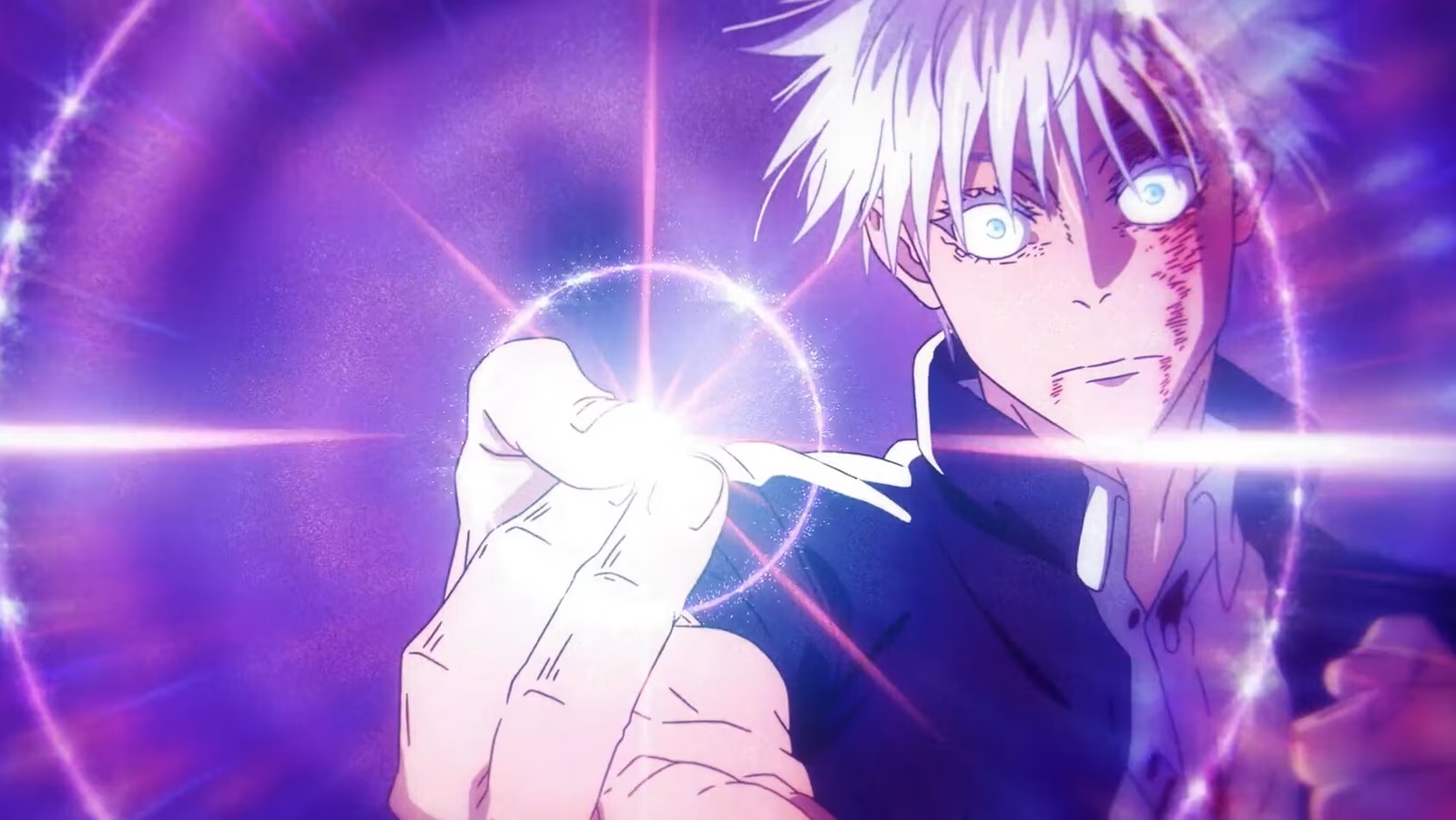
I’m particularly impressed by how the anime portrays Gojo’s eyes when he removes his blindfold. The depth and intensity captured in those moments add so much to the character’s presence on screen.
5. Gojo’s Relationships: Mentorship and Rivalry
While Gojo often stands apart due to his immense power, his relationships with other characters are crucial to understanding his role in the story. As I’ve watched Jujutsu Kaisen, I’ve been particularly drawn to Gojo’s interactions with his students and his complex relationships with other powerful sorcerers.
The Mentor Role
Gojo’s role as a mentor to Yuji, Megumi, and Nobara is one of my favorite aspects of his character. Despite his overwhelming power, Gojo takes a genuine interest in nurturing the next generation of sorcerers. I find it touching how he balances his playful nature with moments of genuine guidance and support.
What’s particularly interesting to me is how Gojo’s teaching style reflects his own personality and beliefs. He doesn’t just teach techniques; he challenges his students to think for themselves and question the established order of the jujutsu world. This approach adds depth to both Gojo’s character and the overall themes of the series.
Rivalry and Respect: Gojo and Geto
No discussion of Gojo’s relationships would be complete without mentioning Suguru Geto. The complex history between these two characters adds a fascinating layer to Gojo’s backstory. Their relationship, which spans from close friendship to bitter rivalry, provides some of the most emotionally charged moments in the series.
I’m particularly intrigued by how Geto serves as a foil to Gojo. Both are incredibly powerful sorcerers, but they’ve chosen drastically different paths. This contrast highlights Gojo’s own choices and the weight of his responsibilities in a way that I find deeply compelling.
Interactions with Authority
Gojo’s interactions with the higher-ups in the jujutsu world offer yet another fascinating aspect of his character. His casual disregard for authority and his willingness to challenge the established order reveal a lot about his worldview. I admire how Gojo uses his position as the strongest sorcerer to push for change, even if it puts him at odds with those in power.
These interactions also serve to highlight the political aspects of the jujutsu world, adding depth to the series’ world-building. It’s interesting to see how even someone as powerful as Gojo must navigate the complexities of jujutsu society.
6. The Voice Behind the Power: Gojo’s Stellar Voice Acting
As much as I love Gojo’s character design and writing, I have to give credit to the incredible voice acting that brings him to life. Both the Japanese and English voice actors have done an outstanding job of capturing Gojo’s complex personality.
Yuichi Nakamura’s Iconic Performance
In the original Japanese version, Yuichi Nakamura delivers a performance that perfectly embodies Gojo’s character. What impresses me most is how Nakamura balances Gojo’s playful side with his more serious moments. The way he can switch from lighthearted teasing to intense determination in an instant adds so much depth to the character.
I particularly love how Nakamura portrays Gojo’s confidence. There’s a subtle arrogance in his tone that never feels overbearing, perfectly capturing Gojo’s position as the undisputed strongest sorcerer.
Kaiji Tang’s English Interpretation
For the English dub, Kaiji Tang brings his own unique flavor to Gojo’s character. What I appreciate about Tang’s performance is how he maintains the essence of Gojo while adapting it for an English-speaking audience. His delivery of Gojo’s quips and one-liners is spot-on, often bringing a smile to my face.
Tang also does an excellent job of conveying Gojo’s more emotional moments. The weight in his voice during serious scenes adds a layer of gravitas to the character that I find very compelling.
The Impact of Voice on Character Perception
It’s fascinating to me how much the voice acting influences our perception of Gojo’s character. The tone, the timing, the subtle inflections – all these elements come together to create a fully realized personality. Whether it’s Nakamura’s smooth confidence or Tang’s playful charm, the voice acting plays a crucial role in making Gojo the fan favorite he is today.
7. Gojo’s Fighting Techniques: A Closer Look
While we’ve touched on Gojo’s powers earlier, I think it’s worth taking a closer look at some of his specific techniques. The creativity and visual spectacle of Gojo’s abilities are a big part of what makes him such an exciting character to watch.
Hollow Purple: The Ultimate Technique
Of all Gojo’s techniques, Hollow Purple stands out as particularly awe-inspiring. The way it’s described in the series – as the convergence of imaginary mass and infinite space – is mind-bending. When I first saw Gojo use this technique in the anime, I was blown away by its sheer destructive power and the beautiful animation that accompanied it.
What I find most interesting about Hollow Purple is how it represents the pinnacle of Gojo’s abilities. It’s not just a powerful attack; it’s a manifestation of his complete mastery over his cursed technique.
Domain Expansion: Unlimited Void
Gojo’s Domain Expansion, Unlimited Void, is another technique that showcases the true extent of his power. The concept of overwhelming an opponent with infinite information is both terrifying and fascinating. I love how this technique is visualized in the anime, with its swirling patterns and disorienting effects.
What’s particularly interesting about Unlimited Void is how it reflects Gojo’s personality. The idea of an infinite realm of possibilities seems fitting for a character who constantly pushes the boundaries of what’s possible in the jujutsu world.
Reverse Cursed Technique: The Hhealing Factor
While not as flashy as his offensive techniques, Gojo’s mastery of the Reverse Cursed Technique is a crucial part of his arsenal. The ability to heal himself instantly adds another layer to his seeming invincibility. What I find most intriguing about this technique is how it ties into the broader themes of the series, particularly the balance between cursed energy and positive energy.
8. Gojo in Popular Culture: Memes and References
One of the most entertaining aspects of Gojo’s popularity is how he’s become a fixture in anime memes and pop culture references. As I scroll through social media
Anime
Mastering My One Piece Knowledge: Top Fillers One Piece List
Master your One Piece knowledge with this fillers One Piece list. Discover which arcs to watch and which to skip!
Published
5 months agoon
September 28, 2024By
Awais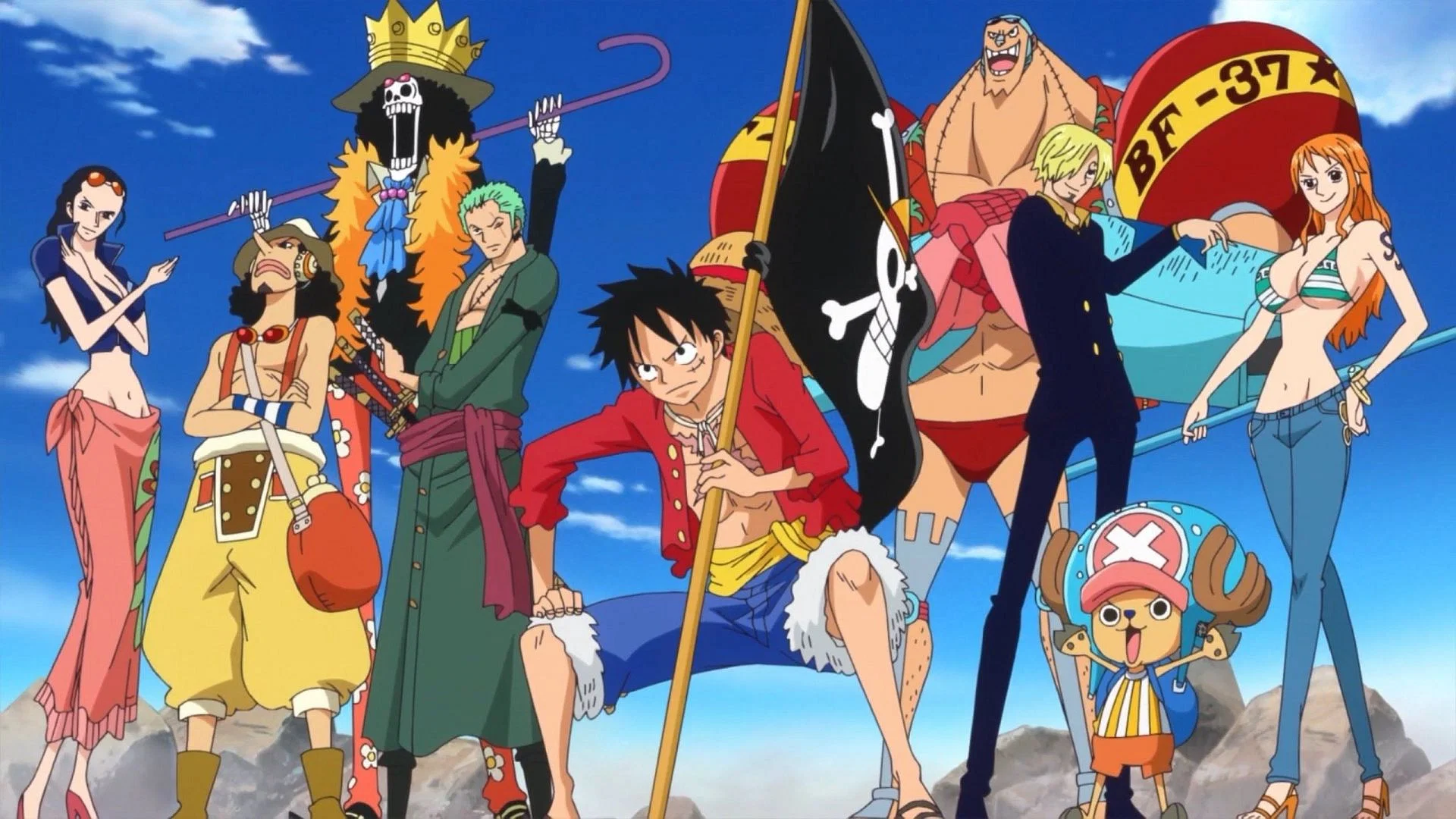
Top Fillers One Piece List
So, let’s chat about those infamous Fillers One Piece List that pop up in anime, and yes, One Piece definitely has its fair share. These fillers? They’re the pit stops your journey needs so the manga can trot ahead without the anime catching up. As a fan myself, I’ve seen fillers take us on zany sidetracks—little side quests that don’t meddle with the main saga but keep things rolling smoothly.
In One Piece, fillers can be anything from goofy little escapades to more serious mini-arcs. They give us a breather from the heavy stuff and sometimes showcase character development or wacky side stories.
When you look at other blockbuster shōnen anime, One Piece sure stands out. It doesn’t bog you down with too much filler fluff, and that’s a relief for folks wanting to ride the main plot train.
According to ONE Esports, out of 1,102 episodes, only 98 are filler—that’s about nine percent. In the wild world of anime, that’s not too shabby.
| Anime | Total Episodes | Filler Episodes | Percentage of Filler |
|---|---|---|---|
| One Piece | 1,102 | 98 | 9% |
| Naruto | 720 | 288 | 40% |
| Bleach | 366 | 164 | 45% |
| Dragon Ball | 807 | 105 | 13% |
(Data from Screen Rant)
From what I’ve picked up, the fewer detours in One Piece help newbies jump on board without getting lost in too many tangents. Binge-watching all those episodes, since they’re around 23 to 24 minutes each, would take you about 435 hours—that’s more than eighteen days of pure, unadulterated adventure (TheGamer).
Striking the right chord between key episodes and fillers in One Piece ramps up the viewing pleasure and keeps you from drifting off course in this epic voyage.
Notable Top Fillers One Piece List
When digging into the fillers in One Piece, some arcs pop out for their quirky stories and fun vibe. In this part, I’m gonna share my thoughts on four standout filler arcs: Warship Island, G-8, Caesar Retrieval, and Silver Mine.
Warship Island Arc
The Warship Island Arc kicks off as one of the first filler sights, popping up right after the East Blue Saga. It barges in at a key spot in Luffy’s adventures but doesn’t bring much weight to the grand One Piece tale (CBR). Here, the Straw Hat Pirates lend a hand to Apis, a girl with some unusual tricks, trying to hide a strange dragon from the grip of the Marines.
| Arc | Episodes | Importance to Plot |
|---|---|---|
| Warship Island Arc | 54 – 61 | Low |
G-8 Arc
The G-8 Arc gets kudos as one of the laugh-out-loud and top-tier fillers in the One Piece saga (Beebom). The gig kicks off with the Straw Hats stuck in a Marine base, looking for a way out. It’s packed with laughs, some nifty character growth, and even tosses in a sliver of canon in episode 203. This arc lets every crew member show off their chops in a funny hide-and-seek chase.
| Arc | Episodes | Importance to Plot |
|---|---|---|
| G-8 Arc | 196 – 206 | Moderate (Episode 203 is partially canon) |
Caesar Retrieval Arc
Swinging in after the Punk Hazard Arc, we meet the Caesar Retrieval Arc, where shady folks nab Caesar from the grasp of the Straw Hats (Beebom). The crew, teaming up with the Heart Pirates, launches a spirited mission to snag Caesar back. This arc dishes out thrilling action and fits snugly with ongoing plots, keeping fans on the edge of their seat.
| Arc | Episodes | Importance to Plot |
|---|---|---|
| Caesar Retrieval Arc | 626 – 628 | Moderate |
Silver Mine Arc
Happening after the Dressrosa arc, the Silver Mine Arc lays the scene for One Piece Film: Gold. It follows Luffy and Bartolomeo (Barto) as they’re caught by the Silver Pirates. The duo fights to break out of a fort surrounded by shiny silver mines. This arc doesn’t just set the stage for the flick but packs in some wild and fun spots.
| Arc | Episodes | Importance to Plot |
|---|---|---|
| Silver Mine Arc | 747 – 750 | High (Sets up One Piece Film: Gold) |
Taking a peek at these cool filler arcs gives us a taste of the wacky and varied storytelling One Piece brings, even when it’s stepping outside the main storyline. Each arc packs a punch and adds a burst to the vibrant tapestry known as One Piece.
Filler Arcs to Skip
So you love diving into my One Piece adventure, but let’s face it, some filler arcs drift astray from what makes it actually exciting. Here’s where I stand on a few detours you can sail right past without a second thought.
Post-Alabasta Arc
After Crocodile bites the dust, the Post-Alabasta Arc pops up, hoping to lighten the mood. But, spoiler alert, it fails to dig deep into character growth or get the plot juices flowing. You might find it pretty thin, not worth the pit stop if you’re keen to stick to stories that pack a punch. Trust me, I double-checked with CBR.
| Arc | Episodes | What’s Bugging Me |
|---|---|---|
| Post-Alabasta Arc | 131-135 | Lacks depth and character growth, feels like missing the mark |
Goat Island Arc
Goat Island might promise a funky new buddy, but it ends up repeating itself and not really hitting any main story beats. Honestly, it’s like chasing your tail. Skipping it won’t leave any crucial gaps in your One Piece voyage. Don’t take it just from me, CBR agrees.
| Arc | Episodes | What’s Bugging Me |
|---|---|---|
| Goat Island Arc | 136-138 | Repeats itself, doesn’t move the story forward |
Ruluka Island Arc
Coming off the high of the Alabasta Arc, Ruluka Island feels like someone hit the snooze button. It just doesn’t hold a candle to the main action-packed arcs. More yawn than yay, really. CBR nailed it on the head.
| Arc | Episodes | What’s Bugging Me |
|---|---|---|
| Ruluka Island Arc | 139-143 | Boring tempo, especially after a main arc dynamo |
Davy Back Fights Arc
In the Long Ring Long Land, the Davy Back Fights Arc drags with extra rounds that do little but stretch things out, and not in any fun way. It’s more a maze than a meaningful jaunt. CBR and I see eye to eye on this.
| Arc | Episodes | What’s Bugging Me |
|---|---|---|
| Davy Back Fights Arc | 207-219 | Unnecessary rounds, disconnects from the main excitement |
These filler arcs remind me of the time I spent hours sorting my sock drawer—looked good, but didn’t change my life. Stick to where it counts, and enjoy your One Piece ride!
Recommendations for Filler Watching
Wading through filler episodes of One Piece can feel like you’re lost at sea. But fear not, I’m here to guide you through the nautical miles to discover which filler arcs really are treasures and which are just empty chests.
Impactful Filler Arcs
Every now and then, an arc comes along that makes you forget you’re even watching filler. These gems add a splash to the One Piece experience:
- G-8 Arc: This one’s the gold standard of filler arcs. Imagine the Straw Hats trying to sneak out of a Marine base – it’s hilarious and has a plot that’ll keep you on your toes (Beebom).
- Caesar Retrieval Arc: Think of this as a side quest where the crew sets out to grab Caesar Clown. It’s full of action and keeps you on edge.
- One Piece Film: Red Tie-In: Luffy and Uta’s friendship gets the spotlight here, and even though it’s not canon, it gives a nice twist to the main saga.
| Arc | Why It’s Worth Your Time |
|---|---|
| G-8 Arc | Witty, engaging escape story |
| Caesar Retrieval Arc | Packed with action |
| One Piece Film: Red Tie-In | Deeper dive into Luffy’s character |
Filler Arcs to Avoid
Not every filler is a diamond in the rough. Some are better left at the bottom of the ocean:
- Post-Alabasta Arc: Nothing much happens here; it’s like watching paint dry.
- Goat Island Arc: You could skip this one without missing a beat.
- Ruluka Island Arc: Another yawn-fest that adds little to the saga.
- Davy Back Fights Arc: Stretched-out and tiresome, it feels like filler about the filler (CBR).
Criticism and Pacing Issues
Even with fewer filler episodes than most, One Piece often gets flak for dragging things out. It’s like they’re putting the story on slow-mo to dodge catching up with the manga. While it helps keep fillers to a minimum, sometimes it feels like the storyline is just chugging along at half-speed.
Balance Between Canon and Filler
Striking a sweet balance between the core saga and fillers is key to keeping One Piece shipshape. Lately, they’ve been bringing life to thin manga sections with new scenes and snazzier animations (Screen Rant). This way, the story sails smoothly, blending excitement and extras with finesse.
So, there you have it – the map to navigating the ocean of One Piece fillers. Choose wisely, and you’ll find a journey worth every moment through the Grand Line. Happy sailing, fellow adventurer!
Stranger Things Creators Unsure of Season 5 Release
Avengers: Doomsday How Captain America May Be Responsible for Robert Downey Jr.’s Doctor Doom
Elizabeth Olsen Returns: Scarlet Witch’s Shocking Zombie Comeback in MCU 2025
Trending
-
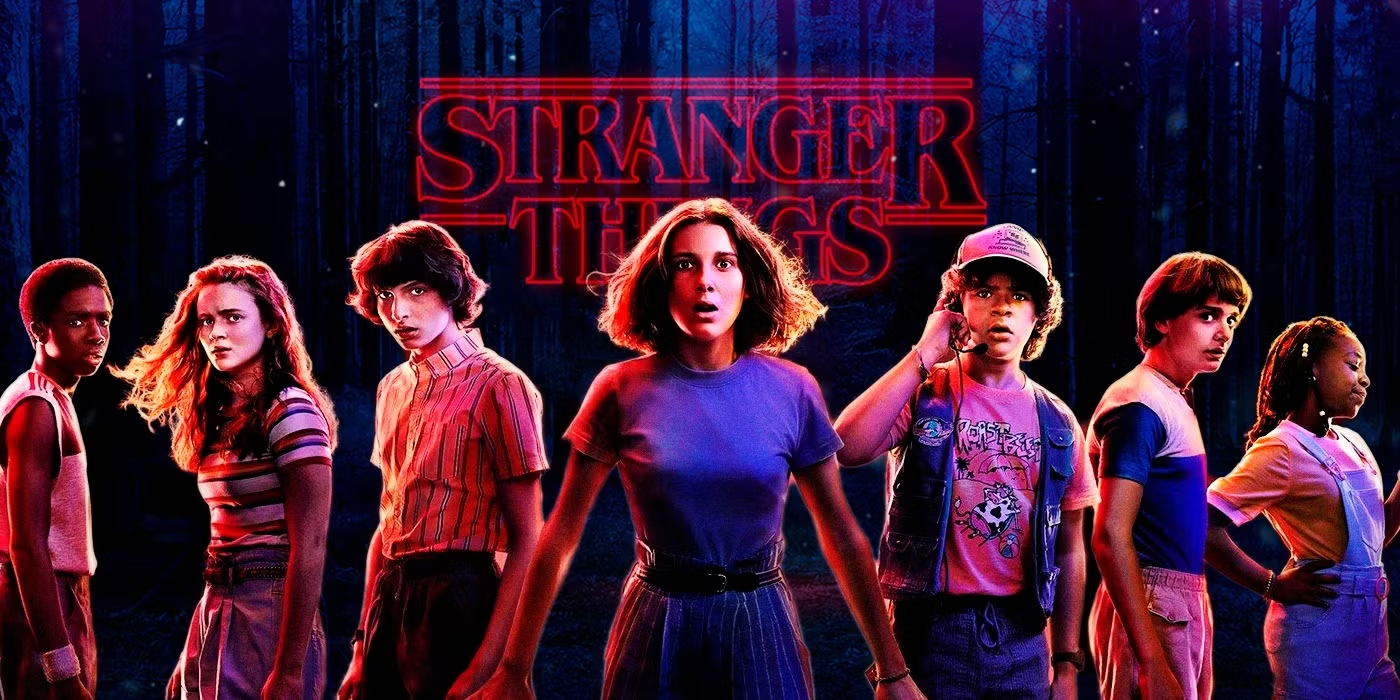
 Netflix3 weeks ago
Netflix3 weeks agoStranger Things Creators Unsure of Season 5 Release
-

 Celebrities5 months ago
Celebrities5 months agoBillie Eilish’s “Hit Me Hard and Soft” – Pop’s Latest Masterpiece
-

 What To Watch4 weeks ago
What To Watch4 weeks agoSuperman Soars in James Gunn’s Stunning New TV Spot
-

 What To Watch3 weeks ago
What To Watch3 weeks agoAvengers: Doomsday How Captain America May Be Responsible for Robert Downey Jr.’s Doctor Doom
-

 Celebrities5 months ago
Celebrities5 months agoDua Lipa The Unstoppable Pop Sensation Dominating Charts and Hearts
-
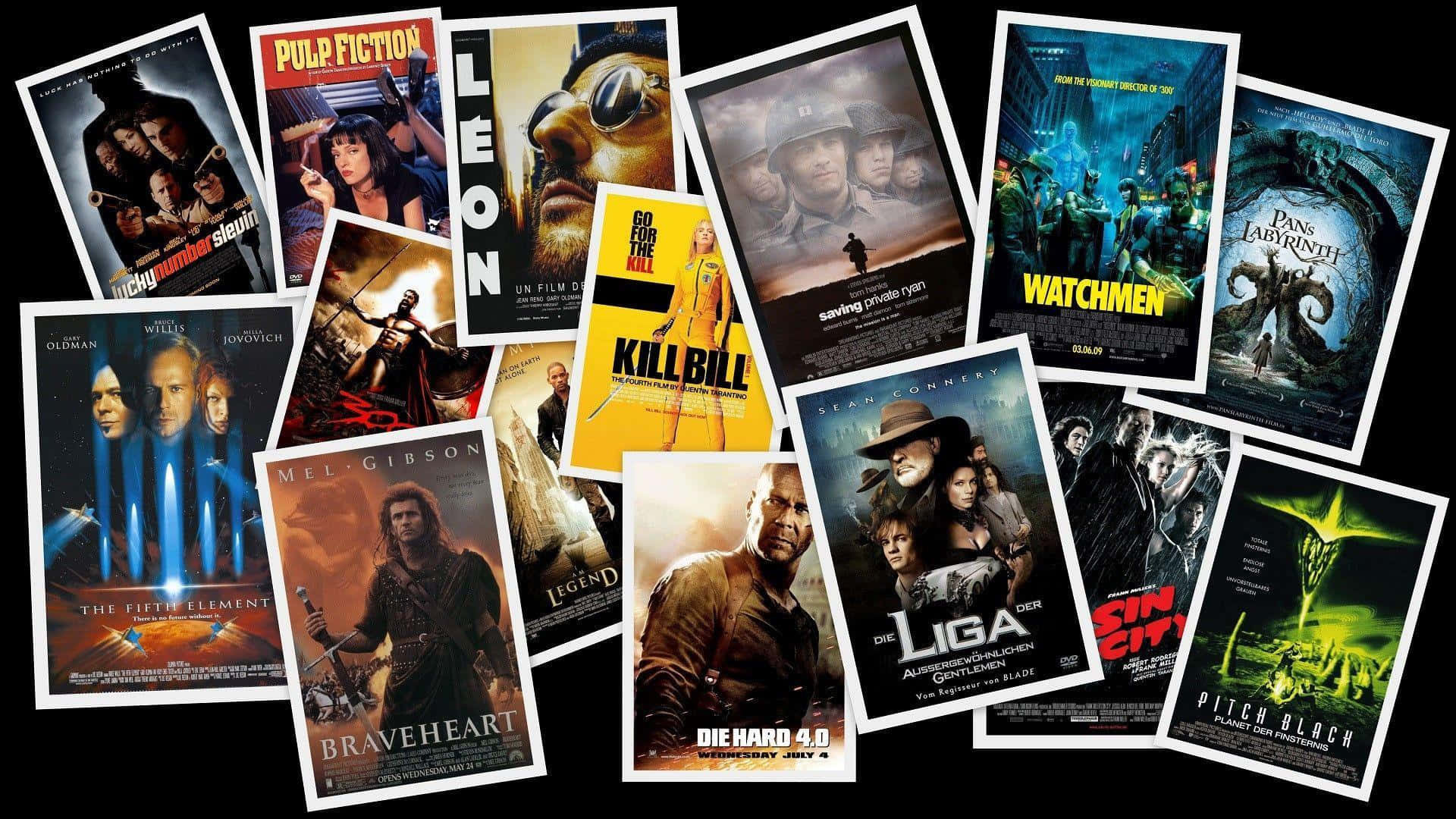
 What To Watch5 months ago
What To Watch5 months agoHigh Definition Movies: 5 Powerful Ways to Enhance Your Viewing & Avoid Common Flaws
-
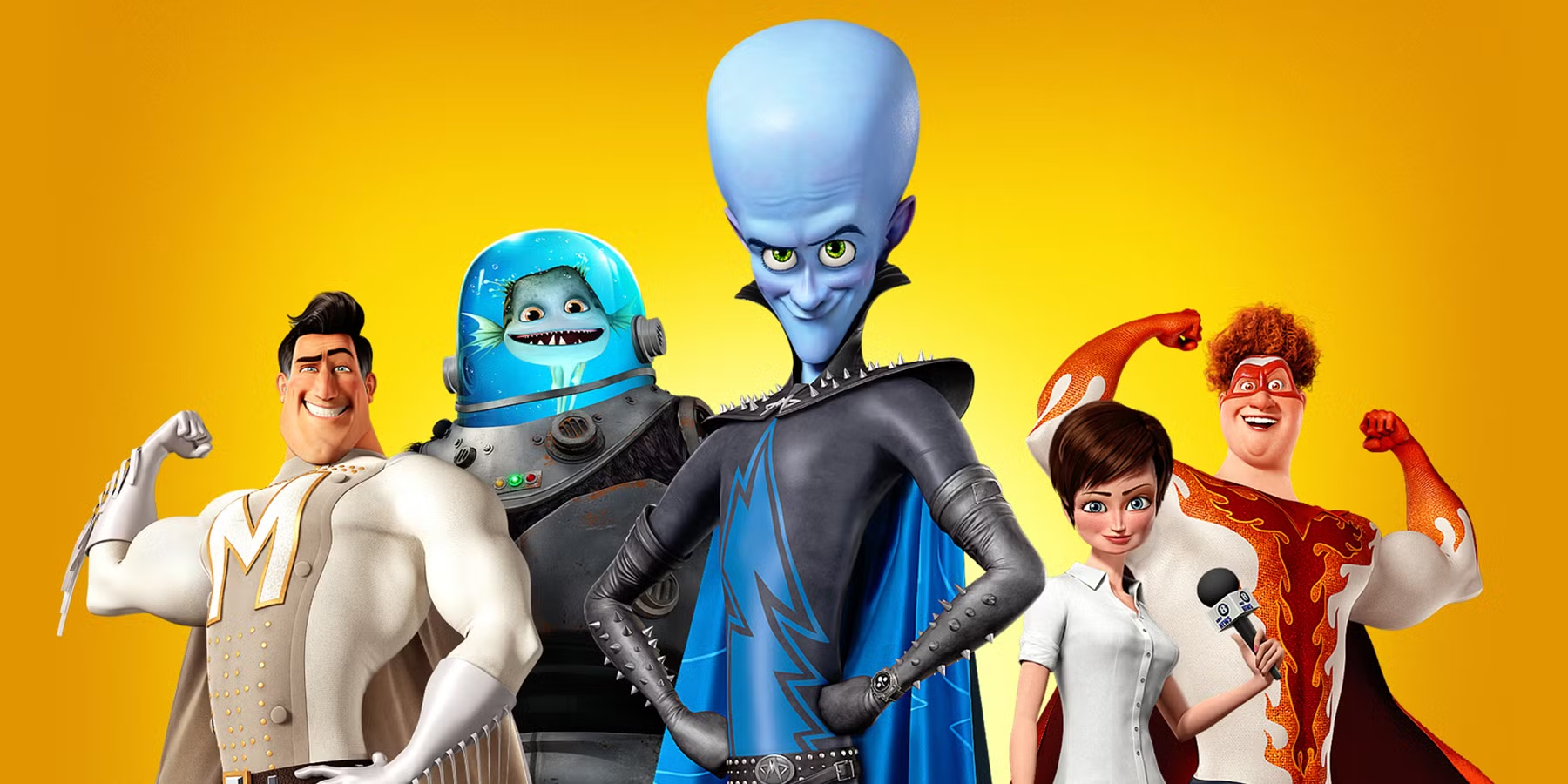
 Animated Films4 months ago
Animated Films4 months agoMegamind 7 Powerful Reasons This Supervillain Still Captures Our Hearts
-

 TV Shows5 months ago
TV Shows5 months agoYoung Sheldon Cast: 5 Surprising Facts That Will Shock You

